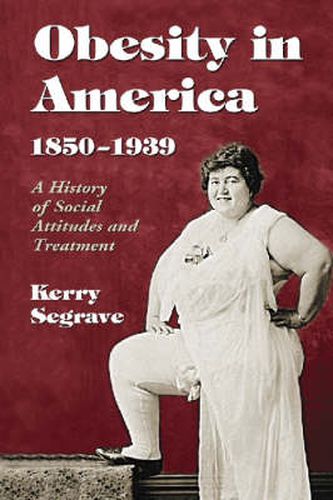Readings Newsletter
Become a Readings Member to make your shopping experience even easier.
Sign in or sign up for free!
You’re not far away from qualifying for FREE standard shipping within Australia
You’ve qualified for FREE standard shipping within Australia
The cart is loading…






This title is printed to order. This book may have been self-published. If so, we cannot guarantee the quality of the content. In the main most books will have gone through the editing process however some may not. We therefore suggest that you be aware of this before ordering this book. If in doubt check either the author or publisher’s details as we are unable to accept any returns unless they are faulty. Please contact us if you have any questions.
The number of overweight and obese Americans has been rising exponentially in recent years, and as a result the United States now has one of the highest rates of obesity in the developed world. Now a leading public health problem for Americans, obesity is a regular topic for nightly news programs, scientific or medical study, and intense public debate. But this study takes a look at obesity in America, concentrating not on the condition as it exists now, but rather on how the condition was viewed, studied, and treated from 1850 to 1939. It concentrates on the images and stereotypes that were associated with fatness during these years, the various remedies that were proposed for the condition, and the often bizarre theories that were proposed to explain obesity, including the idea that ordinary tap water was fattening.The book’s coverage is divided into three periods. From 1850 to 1879 there was little obesity in America, and what little existed was found almost exclusively among the upper class. Besides quackery, the condition received very little medical attention, and only negligible media reports focused on obesity as a true health issue. From 1880 to 1919, a transition of sorts began to occur as doctors, scientists, and other health professionals finally began to present a coherent theory of obesity which was based more on scientific evidence than on wild conjecture. From 1920 to 1939, obesity became accepted as a simple question of ‘calories in’ and ‘calories out’. By this time, the condition was recognized as a big enough health issue that various groups, ranging from private employers to public health officials, began developing some of the nation’s first organized weight reduction programs. One appendix looks at the average weights of American men and women as recorded in 1931.
$9.00 standard shipping within Australia
FREE standard shipping within Australia for orders over $100.00
Express & International shipping calculated at checkout
This title is printed to order. This book may have been self-published. If so, we cannot guarantee the quality of the content. In the main most books will have gone through the editing process however some may not. We therefore suggest that you be aware of this before ordering this book. If in doubt check either the author or publisher’s details as we are unable to accept any returns unless they are faulty. Please contact us if you have any questions.
The number of overweight and obese Americans has been rising exponentially in recent years, and as a result the United States now has one of the highest rates of obesity in the developed world. Now a leading public health problem for Americans, obesity is a regular topic for nightly news programs, scientific or medical study, and intense public debate. But this study takes a look at obesity in America, concentrating not on the condition as it exists now, but rather on how the condition was viewed, studied, and treated from 1850 to 1939. It concentrates on the images and stereotypes that were associated with fatness during these years, the various remedies that were proposed for the condition, and the often bizarre theories that were proposed to explain obesity, including the idea that ordinary tap water was fattening.The book’s coverage is divided into three periods. From 1850 to 1879 there was little obesity in America, and what little existed was found almost exclusively among the upper class. Besides quackery, the condition received very little medical attention, and only negligible media reports focused on obesity as a true health issue. From 1880 to 1919, a transition of sorts began to occur as doctors, scientists, and other health professionals finally began to present a coherent theory of obesity which was based more on scientific evidence than on wild conjecture. From 1920 to 1939, obesity became accepted as a simple question of ‘calories in’ and ‘calories out’. By this time, the condition was recognized as a big enough health issue that various groups, ranging from private employers to public health officials, began developing some of the nation’s first organized weight reduction programs. One appendix looks at the average weights of American men and women as recorded in 1931.